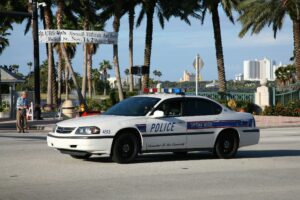Daytona Police Procedures and Protocols
In Daytona Beach, Florida, understanding the Daytona police procedures is crucial for both residents and visitors, especially regarding DUI laws. Law enforcement protocols aim to ensure public safety while following state laws and departmental policies. This overview offers essential insights into how Daytona police operate, focusing on traffic stops, arrests, investigations, and community interactions of the Daytona Law Enforcement Practices
1. Traffic Stops
Officers initiate traffic stops for various reasons, such as speeding, traffic violations, or suspected DUI. They usually approach the vehicle from the driver’s side unless safety concerns dictate otherwise. Officers will request the driver’s license, registration, and insurance. They assess the situation for signs of impairment. Drivers can respond appropriately by understanding this process.
2. Field Sobriety Tests (FST)
Daytona Police Operations: When officers suspect a driver is under the influence, they conduct field sobriety tests (FSTs). These tests include walking in a straight line or standing on one leg. Officers may also use a breathalyzer to check blood alcohol content (BAC) if they have probable cause. Drivers should remain aware of these procedures to prepare for encounters.
3. Arrests
Officers must have probable cause to make an arrest. This often comes from evidence gathered during a stop or investigation. Upon arrest, officers read the Miranda rights to the individual. This informs them of their right to remain silent and to legal counsel. Knowing these rights can empower individuals in challenging situations. Its a Daytona Police Standard Operating Procedures
4. Investigations
Officers document incidents carefully. They gather evidence and take witness statements to build a strong case. Investigators then conduct follow-up interviews to collect additional evidence. This thorough examination ensures all aspects of the situation are considered.
5. Community Interaction
Community-oriented policing is a key part of Daytona’s law enforcement approach. Officers engage actively with residents by participating in local events. They build positive relationships with the community. Through outreach programs, officers educate the public on safety and crime prevention. This interaction helps enhance trust in law enforcement.
6. Use of Force
Daytona police are trained to use force judiciously. They apply de-escalation techniques whenever possible. Officers must document and justify any use of force, ensuring accountability within the department.
7. Emergency Response
Officers respond to emergency calls as directed by dispatch. They prioritize incidents based on severity. In some cases, they collaborate with other law enforcement and emergency response agencies to ensure public safety.
In summary, the Daytona police procedures and protocols aim to uphold the law while maintaining community trust. By understanding these procedures, individuals can navigate interactions with law enforcement effectively.
The information on Daytona Beach police procedures is generally based on standard practices in law enforcement and may include:
1. Daytona Beach Police Department
The official website provides resources that outline their procedures, community policing initiatives, and guidelines for traffic stops and arrests.
2. Florida State Statutes
These laws govern law enforcement practices, including those specific to traffic violations and DUI regulations.
3. Law Enforcement Training Materials
Standard training protocols used by police departments in Florida and across the United States are often influenced by organizations like the International Association of Chiefs of Police (IACP).
4. Community Resources
Local community programs and initiatives educate the public on police procedures and promote community engagement.
For the most accurate and specific information, refer to the Daytona Beach Police Department’s official website or the Florida Department of Law Enforcement (FDLE) for insights into law enforcement policies and practices in Florida.



